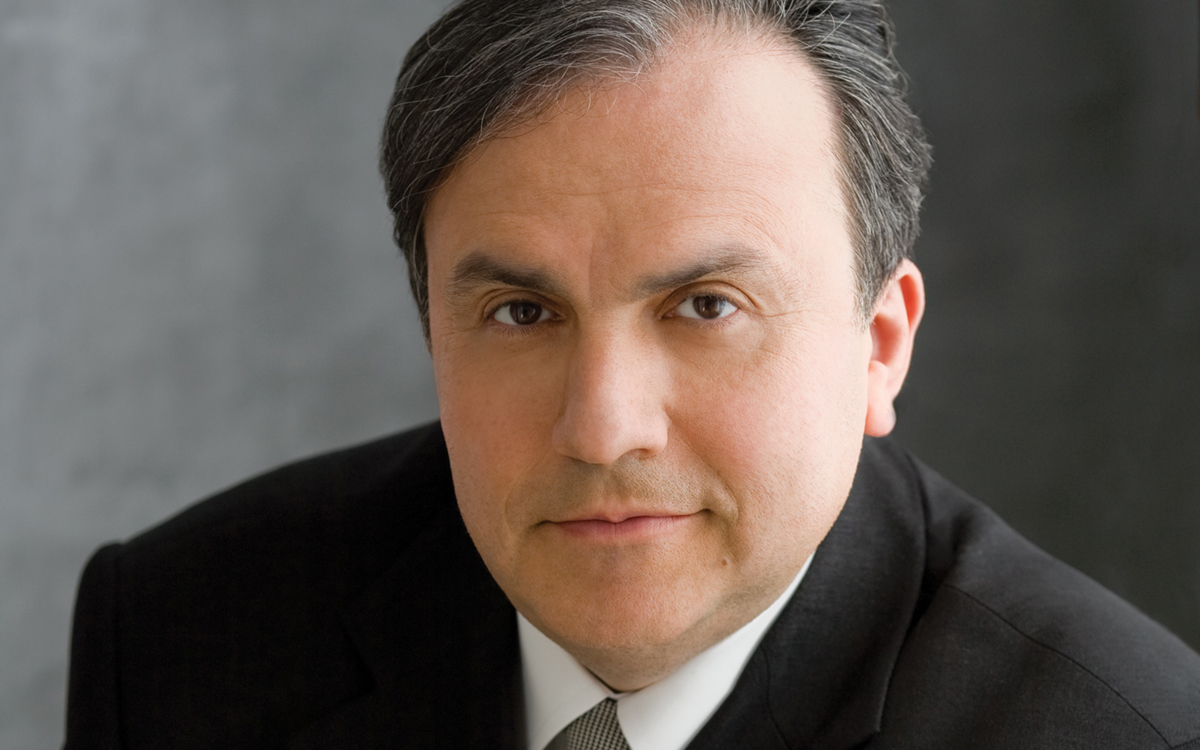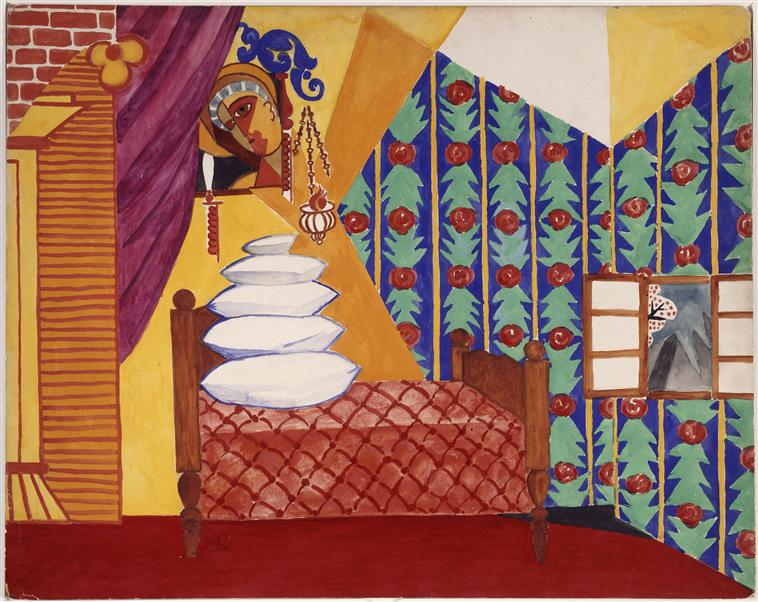Over the past two Saturdays, Vladimir Jurowski and a London Philharmonic on top form have given us a mini-festival of great scores for Diaghilev’s Ballets Russes. The hallucinogenic vision of ancient Greece in Ravel’s Daphnis et Chloé last week was succeeded yesterday evening by the fresh-as-poster-paint colours of Stravinsky’s Petrushka and excerpts from Prokofiev’s Chout (The Buffoon), a longer score in the Petrushka mould which has suffered disproportionate neglect (though not from the LPO – both Alexander Lazarev and Jurowski have conducted the complete ballet). Both works, especially in the energised rhythmic focus that is a Jurowski trademark, made the concerto receiving its UK premiere in between seem like a sclerotic, overweight uncle to two cheeky adolescents.
You never know what to expect from the LPO’s Finnish composer-in-residence Magnus Lindberg. He’s often served up knotty, for me rather arid scores of extreme complexity – January’s Accused with Barbara Hannigan seems to have been one such according to theartsdesk’s review – but took me by surprise with a luminously tonal concerto for the astounding clarinettist Kari Kriikku. Pianist Yefim Bronfman (pictured below by Dario Acosta) is in the same league, and brought his Russian-school weight to bear on the Second Piano Concerto composed for him and the New York Philharmonic during Lindberg’s tenure with that hard-hitting band. Yet the more coruscating the performance, the emptier the substance came to seem, especially given the lack of discernible shape on a first hearing.
 Believe me, Prokofiev and Stravinsky would have laughed this baggy monster to scorn. Just because you have a huge orchestra at your fingertips, there’s no need to go for Hollywood film-score overload. There are memorable sounds in the piece, especially when solo strings comment on the pianist’s labours, but no great ideas. If you’re going to imitate Rachmaninov and Ravel, you need melodies to match; instead I was reminded more of the dead weight in concertos by Khachaturian and Shchedrin. Second-drawer music, to be sure, in a first-class performance. What a waste of Bronfman's huge talent, especially since he's one of the few pianists around who can play another Second, Prokofiev's far more engaging monsterpiece.
Believe me, Prokofiev and Stravinsky would have laughed this baggy monster to scorn. Just because you have a huge orchestra at your fingertips, there’s no need to go for Hollywood film-score overload. There are memorable sounds in the piece, especially when solo strings comment on the pianist’s labours, but no great ideas. If you’re going to imitate Rachmaninov and Ravel, you need melodies to match; instead I was reminded more of the dead weight in concertos by Khachaturian and Shchedrin. Second-drawer music, to be sure, in a first-class performance. What a waste of Bronfman's huge talent, especially since he's one of the few pianists around who can play another Second, Prokofiev's far more engaging monsterpiece.
The sparkling sounds either side of Lindberg's elephant in the room could easily have been poking fun at its pretensions. Both Prokofiev in the somersaulting dance-finale of Chout – a piece I’ve always thought would make a superb encore-alternative to the usual "Death of Tybalt" from Romeo and Juliet – and Stravinsky in the Shrovetide fairground bustle that kicks off Petrushka like a massive barrel-organ know how to be light with huge forces – and we got the luxury original, 1911 version of Petrushka rather than the relatively slimline 1947 revision; not that, a few smudges early on apart, Jurowski was going to make this astounding score sound anything other than razor-sharp.
He had a predictably top team of LPO soloists to shine in this concerto for orchestra that also manages to speak, shriek, whimper and charm. Guest principal flautist Michael Cox – he does get around – coaxed the puppets of Petrushka, his beloved Ballerina and the rival Moor (unfortunate racist stereotype) to life. The piano role has remnants of the ballet’s virtuoso concert-piece origins, and having just listened to Jean-Efflam Bavouzet including Petrushka on his Stravinsky concertos CD, I wondered if we’d be back to reticent orchestral pianist. Not a bit of it: Catherine Edwards cut through the textures from centre-left, hit every note spot-on and captured all the facets of the schizoid Pierrot/Mr Punch.
Even xylophonist Sarah Mason among a high-profile percussion array made us hear more of another astonishing part. And if ace cornettist Nicholas Betts tripped momentarily on the Ballerina’s high-wire act, Paul Benniston and Anne McAneny held their nerve as the splitting-off, spitting ghost of Petrushka on the puppet-theatre roof in a perfect abrupt ending. Full marks, incidentally, to the LPO for including supertitles for the ballet action a second week running: you could always ignore them if you just wanted to hear the music unannotated.
 A Chout selection (design for Ballets Russes premiere by Mikhail Larionov pictured left) was first in the circus ring. Jurowski probably could have given us a dance or two more (the 12-movement Suite is too long; this was too short). We never got to hear how the Buffoon outwitted seven other Buffooons by selling them a “magic” whip to resuscitate their murdered wives, nor how our hero, disguised as his sister, escapes from a merchant on their “bridal night” by substituting a goat as “her” transformed self. But we did get the goat being beaten to death, the spoof Rite of Spring ceremony over its dead body – too much page-turning in what should have been consecutive action – and best of all the jolliest of dance-finales.
A Chout selection (design for Ballets Russes premiere by Mikhail Larionov pictured left) was first in the circus ring. Jurowski probably could have given us a dance or two more (the 12-movement Suite is too long; this was too short). We never got to hear how the Buffoon outwitted seven other Buffooons by selling them a “magic” whip to resuscitate their murdered wives, nor how our hero, disguised as his sister, escapes from a merchant on their “bridal night” by substituting a goat as “her” transformed self. But we did get the goat being beaten to death, the spoof Rite of Spring ceremony over its dead body – too much page-turning in what should have been consecutive action – and best of all the jolliest of dance-finales.
Here Jurowski started at as careful but also as well sprung a pace as he applied to the "Danse Russe" in Petrushka, only to accelerate to glittering mania. The whole ballet cries out for the Matthew Bourne treatment; and meanwhile Jurowski, a born dance-master, should give us many more longer ballet scores in the concert hall, from Delibes’ Coppélia and Tchaikovsky’s The Sleeping Beauty to Britten’s The Prince of the Pagodas and Schnittke’s Peer Gynt.















Add comment